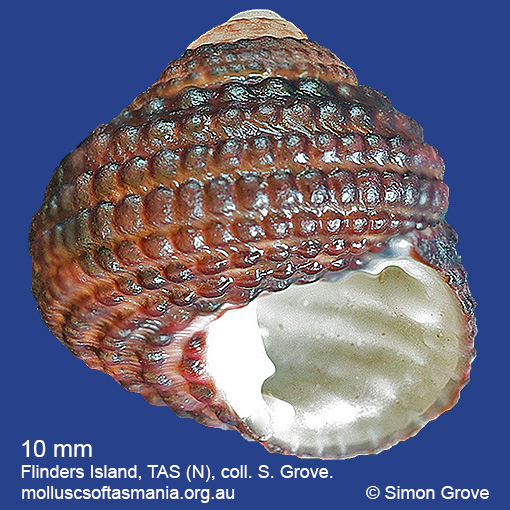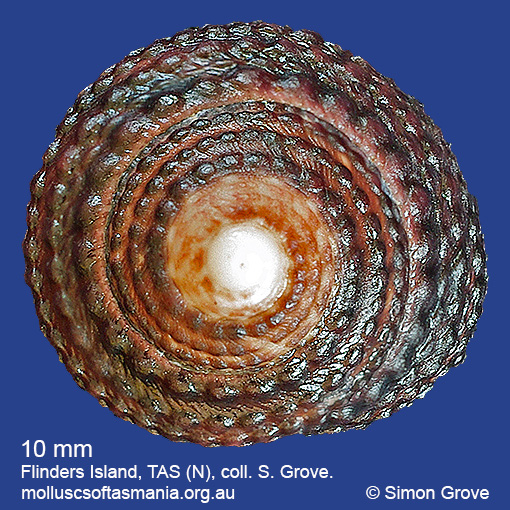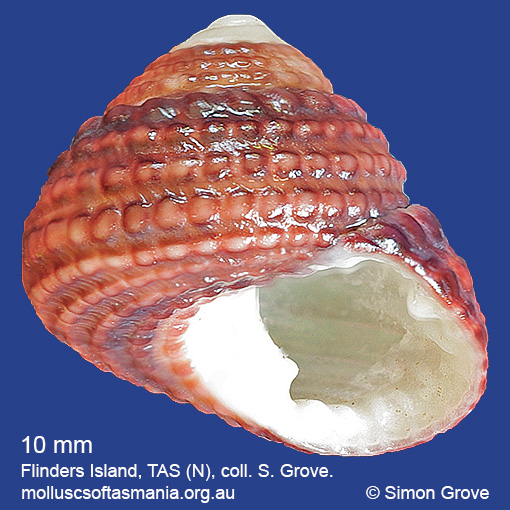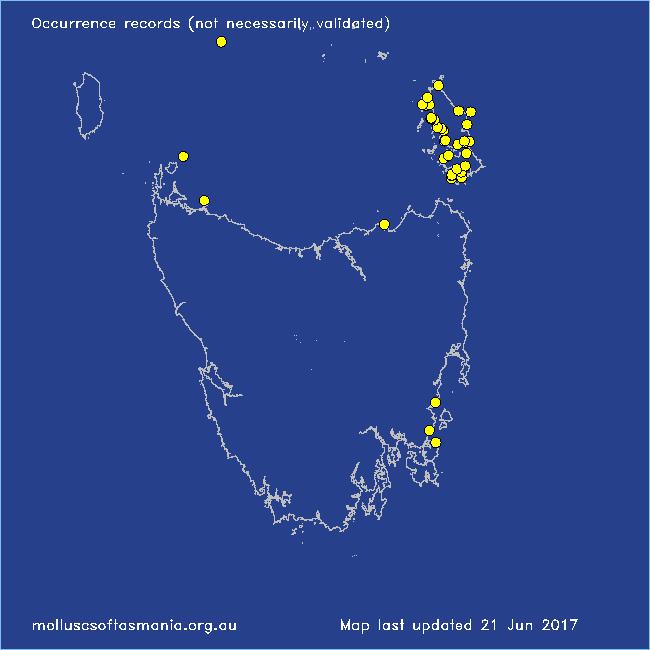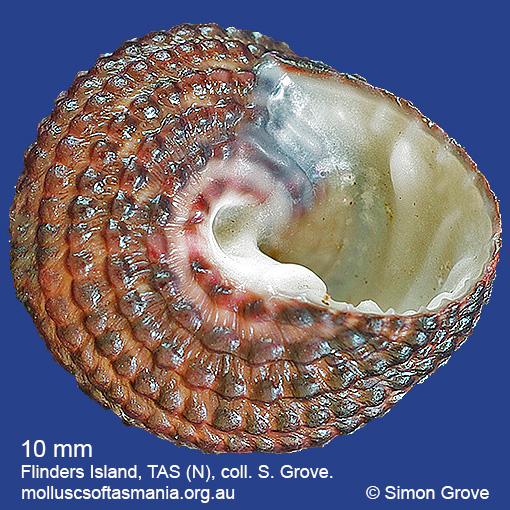
Trochidae – Trochinae: Clanculus dunkeri (Koch in Philippi, 1843) (‘Dunker’s top-shell’)
Synonym(s): dunkeri Koch, 1843 weedingi Cotton, 1939.
Typical shell-length 12 mm. Lives intertidally and subtidally amongst seagrass, especially in sheltered environments. Native. Endemic to southeastern and southwestern Australia (TAS, VIC, SA and WA). In Tasmanian waters, this is a common species around Flinders Island; very few records elsewhere in the N and E.
Classification
Class: Gastropoda
Subclass: Vetigastropoda
Order: Vetigastropoda
Superfamily: Trochoidea
Family: Trochidae
Subfamily: Trochinae
Genus: Clanculus
Localities for Clanculus dunkeri
Bridport: East Sandy Point
Cape Barren Island: Kenneth Point
Cape Barren Island: Kent Bay
Cape Barren Island: Nautilus Cove
Cape Barren Island: Neds Point
Cape Barren Island (unlocalised)
Clarke Island: Black Point
Clarke Island: Dip Point to Black Rocks
Clarke Island: Kangaroo Bay to Seal Point
Clarke Island: Maclaines Bay
Clarke Island: Spike Bay
Flinders Island: Arthur Bay: Long Point
Flinders Island: Badger Corner
Flinders Island: East River Bluff
Flinders Island: Fotheringate Bay
Flinders Island: Fotheringate Beach: southern end
Flinders Island: Killiecrankie Bay (unlocalised)
Flinders Island: Killiecrankie: foreshore
Flinders Island: Lady Barron: Yellow Beaches
Flinders Island: Leeka: foreshore towards Twelve Hour Point
Flinders Island: Lillies Bay
Flinders Island: Northeast River: mouth
Flinders Island: Parrys Bay: Double Corner
Flinders Island: Patriarch Beach
Flinders Island: Port Davies & Cave Beach
Flinders Island: Pot Boil Point: foreshore to SW
Flinders Island: Sawyers Bay
Flinders Island: Tanners Bay
Flinders Island: Tanners Bay: Pine Scrub
Flinders Island: White Beach to Dick Davey Shoal
Flinders Island: Whitemark Beach
Furneaux Group (unlocalised)
Marion Bay: northern beaches
Stanley: Halfmoon Bay
Tasmania (unlocalised)
